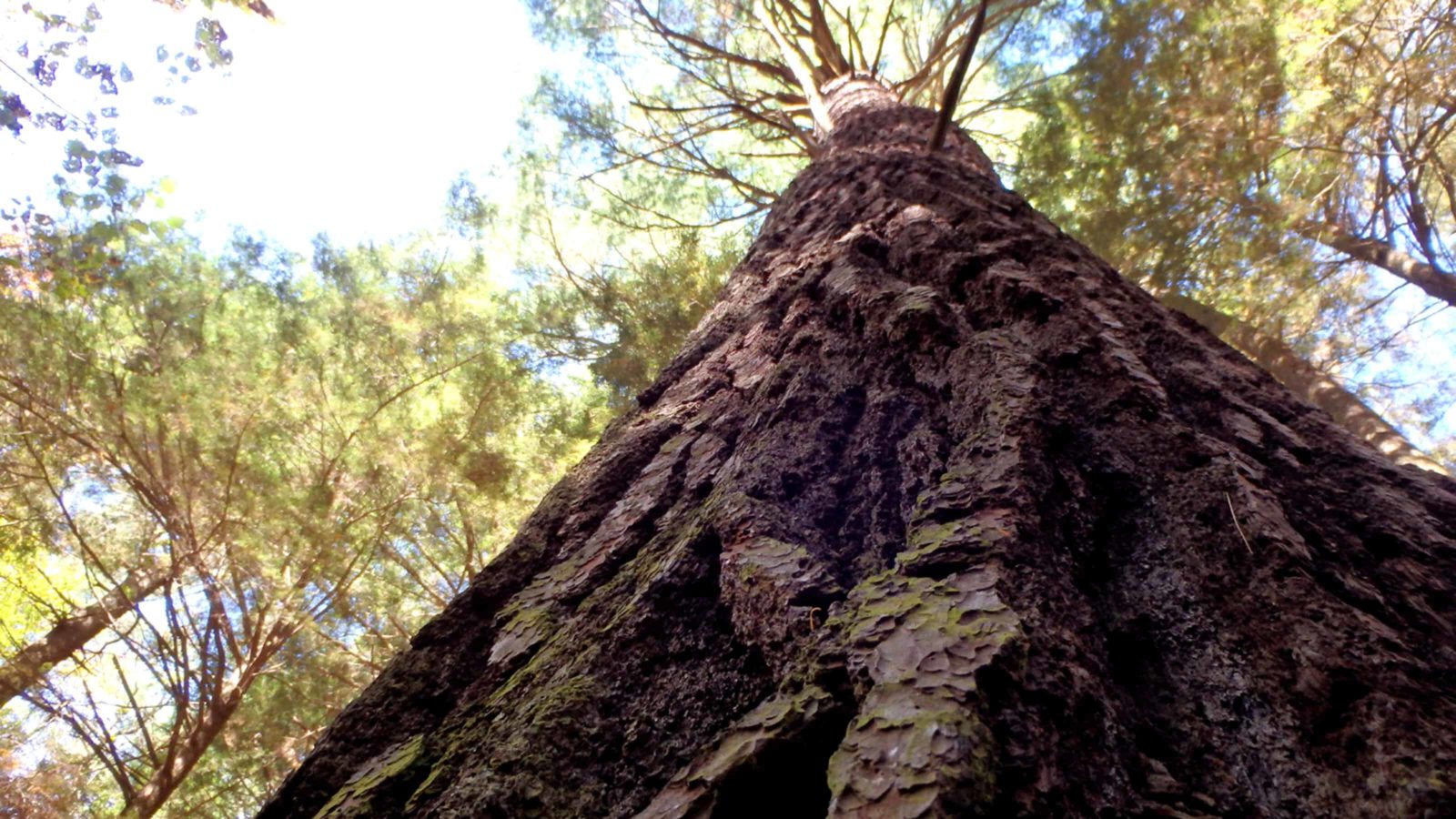“The groves were God’s first temples,” wrote William Cullen Bryant in A Forest Hymn, one of his most “picturesque” poems. It was his way of saying farewell to the mature forests he knew so well, growing near the Bryant family homestead. Even when he was a child, the trees were large, the forest thick — and they remain mostly untouched by the woodsman’s ax and still thriving 188 years later.
From a small parking area near the Bryant Homestead, we walked across a mowed hayfield and Bryant Road to enter the Rivulet Forest. Jim Caffrey, superintendent of Bryant Homestead (and eight other Trustees of Reservations properties), and Bob Leverett, an unassuming authority on old growth forests who devotes his engineering skills to accurately measuring big trees in the northeast and beyond, led us on this journey into history. Tony Costello of Pittsfield and Ray Asselin of Wilbraham, both old-growth enthusiasts, also came along.
Old growth woods have never been harvested. As much as 70 percent of the Berkshires’ woods were cut down between the arrival of the first European colonists and the Civil War — but in pockets, often in hard-to-reach places, giant trees still grow.
We followed the Rivulet Trail and Pine Loop, and Caffrey explained that Bryant made the Rivulet famous in his writing.
Here Bryant spent many hours in his childhood, and later in his life he returned to purchase this track, and he walked here with his family and sat on its banks.
“Bryant was an excellent naturalist, and the birds and plants he mentions in his poetry are accurate to the site,” Caffrey said. “You can guess at the species of the birds he mentions by thinking carefully about his descriptions.”

Bob Leverett measures one of the old-growth hemlocks at the William Cullen Bryant Homestead in Cummington, at just over 150 feet tall.
As we entered an extensive hemlock forest with trees of all ages and sizes, including impressively large specimens of trees 250 years and older, it became obvious these woods are “multi-aged and nature managed,” as Leverett explained.
Pointing at a fallen tree, he said “this hemlock was 290 years old when it died of natural causes, wind most likely. Cattle were turned out into these woods, but the trees were never cut, with the few exceptions of providing for immediate need.”
We were astounded by a moosewood or striped maple. They are sometimes seen within their range growing to 40 feet. Here the specimen was measured at 57 feet tall; another is more than 60 feet tall. The Northeast champion is a 66.5-foot-tall example at Mohawk Trail State Forest in Charlemont.
As we continued, we began seeing taller white pines with wider girth than I am used to, and Leverett pointed out a grove of pines.
“Four are over 12-foot circumference, and one, straight as an arrow, we call the Bryant Pine. It is over 160 feet,” he explains.
Another named pine we saw, the Robert Frost Pine, measured at 154 feet with an 11-foot 3-inch circumference.
The trees are named for fun and to honor nature poets, composers and botanists. Walking through old growth forest like this with “many trees between 200 and 300 years,” according to Leverett, is invigorating, and I can easily see why these groves deserve protection.
Leverett said in an earlier conversation, “There are a number of [other] old growth hotspots in Western Massachusetts including several areas in the Mohawk Trail State Forest, Savoy Mountain State Forest, a couple in Monroe State Forest, the Hopper in Greylock, Ice Gulch in East Mountain State Forest, a couple of spots on Mount Everett, Windsor Jambs, and Bash Bish Falls all on state land.
“Monroe State Forest has, perhaps, 70 acres of old growth. The oldest tree we have dated in that watershed is a 450-year old hemlock.
Mohawk has the largest collection of trees more than 150 feet in height in the Northeast. To date, we have measured 129 white pines and one white ash to over 150 feet.”
When my brother-in-law, Jim Masengo, visited from San Diego, my wife, Susan, and I agreed that Stockbridge, with its historically and geologically famous Ice Glen, would make an enjoyable autumn trip. And I wanted them to see the Ice Glen White Pine, a 156.6 foot tall evergreen with a circumference of 13.1 feet. It stands in a grove of white pines at the south end of the glen, while many of the other old growth trees, mostly hemlocks, are not nearly as impressive, because of where they grow among a tumble of large boulders.
The trail crosses a footbridge over the Housatonic River and enters a stand of field-grown white pines that are up to 180 years old, but in the glen itself, many of the hemlocks are 200 to 400 years old. The property is owned by the Laurel Hill Association, founded in 1853.
Finding trees living out their natural lives without interference from the ax surely is exciting — and worth exploring farther.
Up Close: Directions to the Ice Glen trail head in Stockbridge
Directions: From the center of Stockbridge, head south on Route 7, take a left onto Park Street, go to the end of the road and park in the lot at the Goodrich Memorial footbridge.
This story first ran in the Berkshire Eagle on Nov. 14, 2013, and runs here today with Thom Smith’s permission — thanks, Thom!

